

1980 The Westminster Press
1984 Douglas Stuart
2001 Douglas Stuart
2009 Douglas Stuart
Fourth edition
Westminster John Knox Press
Louisville, Kentucky
09 10 11 12 13 14 15 16 17 1810 9 8 7 6 5 4 3 2 1
All rights reserved. No part of this book may be reproduced or transmitted in any form or by any means, electronic or mechanical, including photocopying, recording, or by any information storage or retrieval system, without permission in writing from the publisher. For information, address Westminster John Knox Press, 100 Witherspoon Street, Louisville, Kentucky 40202-1396. Or contact us online at www.wjkbooks.com.
Scripture quotations from the Revised Standard Version of the Bible are copyright 1946, 1952, 1971, and 1973 by the Division of Christian Education of the National Council of the Churches of Christ in the U.S.A. and are used by permission.
Book design by Sharon Adams
Cover design by Mark Abrams
Library of Congress Cataloging-in-Publication Data
Stuart, Douglas K.
Old Testament exegesis : a handbook for students and pastors / Douglas Stuart.4th ed.
p. cm.
Includes bibliographical references and indexes.
ISBN 978-0-664-23344-0 (alk. paper)
1. Bible. O.T.Hermeneutics. 2. Bible. O.T.Homiletical use. 3. Bible. O.T. Bibliography. I. Title.
BS476.S83 2008
221.601dc22
2008039353
PRINTED IN THE UNITED STATES OF AMERICA
 The paper used in this publication meets the minimum requirements of the American National Standard for Information SciencesPermanence of Paper for Printed Library Materials, ANSI Z39.48-1992.
The paper used in this publication meets the minimum requirements of the American National Standard for Information SciencesPermanence of Paper for Printed Library Materials, ANSI Z39.48-1992.
Westminster John Knox Press advocates the responsible use of our natural resources. The text paper of this book is made from at least 30% post-consumer waste.
To
Gayle, Joanna, Eliza, Eden, Missy,
Hannah, Maria, Delia, and Jon
Contents
Abbreviations
| ABD | Anchor Bible Dictionary, ed. David Noel Freedman, 6 vols. (New York: Doubleday, 1992) |
| ANET | Ancient Near Eastern Texts Relating to the Old Testament, ed. James B. Pritchard, 3rd ed. (Princeton: Princeton University Press, 1969) |
| ATLA | American Theological Library Association |
| BDB | Francis Brown, S. R. Driver, and C. A. Briggs, A Hebrew andEnglish Lexicon of the Old Testament (Oxford: Clarendon, 1907) |
| BH3 | Biblia Hebraica, 3rd ed. (Stuttgart: Wrttembergische Bibelanstalt, 1937) |
| BH5 | Biblia Hebraica Quinta (5th ed. of BH) (Stuttgart: Deutsche Bibelstiftung, 2004) |
| BHQ | another abbreviation for BH5 |
| BHS | Biblia Hebraica Stuttgartensia (4th ed. of BH) (Stuttgart: Deutsche Bibelstiftung, 1977) |
| CAD | The Assyrian Dictionary of the Oriental Institute of the University of Chicago, ed. I. J. Gelb et al. (Chicago: Oriental Institute, 1956) |
| DJD | Discoveries in the Judaean Desert |
| DSS | Dead Sea Scrolls (Qumran) |
| ed. | edited by/editor/edition |
| IDB | Interpreters Dictionary of the Bible, ed. G. A. Buttrick, 4 vols. (Nashville: Abingdon, 1962) |
| ISBE | International Standard Bible Encyclopedia, ed. G. W. Bromiley, 4 vols. (Grand Rapids: Wm. B. Eerdmans, 197988) |
| IRBS | International Review of Biblical Studies |
| JSNT | Journal for the Study of the New Testament |
| JSOTSup | Journal for the Study of the Old Testament Supplements |
| MT | Masoretic Text |
| NIDOTTE | New International Dictionary of Old Testament Theology and Exegesis, ed. Willem A. VanGemeren, 5 vols. (Grand Rapids: Zondervan Publishing House, 1997) |
| NT | New Testament |
| OHB | Oxford Hebrew Bible |
| OT | Old Testament |
| OTA | Old Testament Abstracts |
| Q | Qumran (Dead Sea Scrolls) |
| Quinta | another abbreviation for BHQ |
| repr. | reprint |
| rev. ed. | revised edition |
| SBL | Society of Biblical Literature |
| TDNT | Theological Dictionary of the New Testament, ed. Gerhard Kittel and Gerhard Friedrich, trans. G. W. Bromiley, 10 vols. (Grand Rapids: Wm. B. Eerdmans, 196476) |
| TDOT | Theological Dictionary of the Old Testament, ed. G. J. Botterweck, Helmer Ringgren, and Heinz-Josef Fabry, trans. J. T. Willis, G. W. Bromiley, and D. E. Green, 15 vols. (Grand Rapids: Wm. B. Eerdmans, 19742006) |
| TLOT | Theological Lexicon of the Old Testament, ed. Ernst Jenni and Claus Westermann, trans. M. E. Biddle, 3 vols. (Peabody, MA: Hendrickson, 1997) |
| TWOT | Theological Wordbook of the Old Testament, ed. R. L. Harris, G. L. Archer Jr., and B. K. Waltke, 2 vols. (Chicago: Moody Press, 1980) |
Preface
T hose few students and pastors who control several ancient and modern languages, read the scholarly literature regularly, and have already gained some confidence in their ability to do exegesis will certainly not need this primer. It is written for those who cannot read a Hebrew psalm at sight and who are not sure what Vetus Testamentum would mean or contain (the words mean Old Testament in Latin and are the title of a major OT scholarly journal). It is for those who have no idea what homoioteleuton might mean (same kind of ending, a factor in certain textual problems). It is for the vast majority of all seminary students and pastors. It is predicated on the conviction that even the most intelligent people cannot understand procedures and concepts that are not somehow explained to them, and that there is no shame in seeking such explanations in spite of the fact that most seminary professors do not volunteer them. Old Testament exegesis has regular procedures and concepts, and these can be taught to almost anyone willing to learn. It is a tragedy that so few seminary students ever really feel sure of themselves in doing OT exegesisand most pastors apparently abandon the practice altogether.
I have set out, therefore, to present a step-by-step guide to OT exegesis that will be nontechnical and simple without being simplistic, that will explain not only the procedures but also the goals of exegesis, and that will serve as a handbook for reference as the student or pastor does the actual work of exegesis.
My approach to exegesis has certain conscious biases for which I make no apologies. Perhaps the most debatable is my insistence that exegesis should include guidelines for application of the passage being studied. Exegesis is patently a theological enterprise, and a theology that is not applied to the lives of Gods people is sterile. For this reason, too, I have purposely deemphasized some of the critical techniques (e.g., structuralism, redaction criticism) which, though fascinating to the scholar, yield meager rewards theologically and are, in the final analysis, of minor value homiletically, much as that value judgment may displease some scholars. Likewise and for similar reasons, I have not given attention to various subjective hermeneutical approaches such as ethnic-based, gender-based, or life-status-based interpretational filters. I have tried to set a fair balance between synchronic and diachronic techniques (i.e., techniques concerned with the text as it stands [synchronic] and with the history of the developments that led to the text as it stands [diachronic]), but only insofar as these also hold promise of practical, theological benefit. The end of exegesis is preaching and teaching in the church. Seminary students and pastors know this instinctively and demand relevance from exegesis and other biblical studies, as well they should.

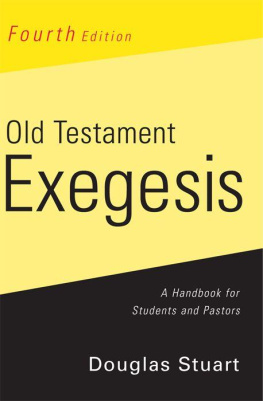
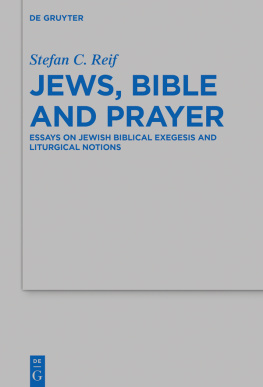
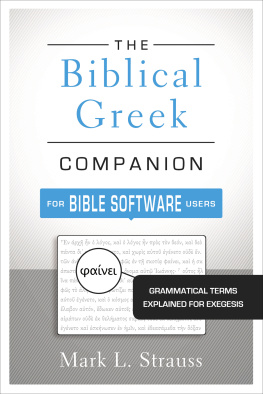
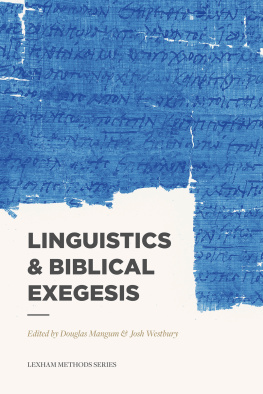
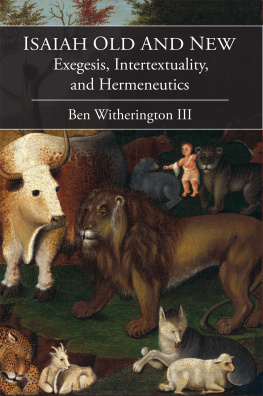
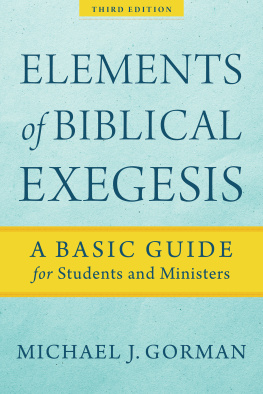
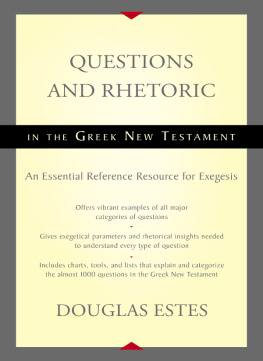
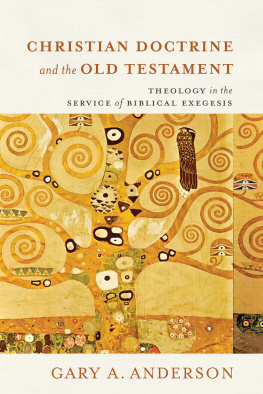
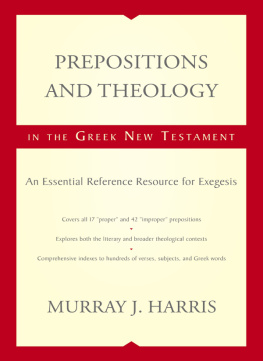
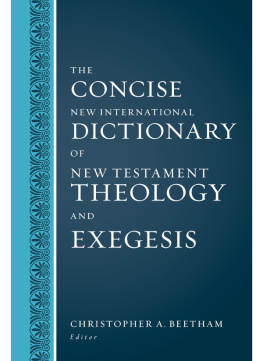

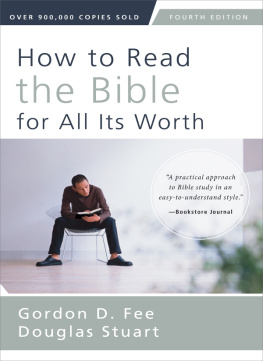


 The paper used in this publication meets the minimum requirements of the American National Standard for Information SciencesPermanence of Paper for Printed Library Materials, ANSI Z39.48-1992.
The paper used in this publication meets the minimum requirements of the American National Standard for Information SciencesPermanence of Paper for Printed Library Materials, ANSI Z39.48-1992.